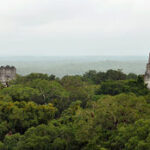Are you looking for a unique animal to incorporate into your Pre-K lesson plan calendar? If so, you may want to consider turning your thoughts towards the platypus. The animal’s odd features are sure to capture the kids’ attention for at least a New York minute. With that said, I’d like to offer some suggestions on how to factor it into your students’ day. Here they are:
Introduction
Start the platypus lesson plan by showing the children a map of Australia. Explain that they are going to learn about an animal that lives there. Then, without mentioning its name, talk briefly about the creature’s habitat. Later, give each child a map of Australia to color.
Next, let the children listen to audio files of a platypus making an array of vocalizations. Copies of platypus vocalizations are available through the Jungle Walk website. While they are listening to the sounds, pass around a plastic egg and a small container of live worms. Tell the children that all of those items are connected to the creature that they will be learning about. Let them guess which creature it is.
Afterward, bust out a platypus hand puppet and a copy of Sneed B. Collard III’s book “A Platypus Probably.” Continue the lesson plan by using the puppet and Collard’s book to introduce the children to platypuses.
Just in case you don’t already have one, platypus hand puppets are available for purchase through assorted retailers. They range in price from $15 to $25 depending on the design. Two places where you can purchase the puppets are the Western Australia Museum and the Christ in Education websites. Of course if you are crafty, you could make your own. Instructions and a template for making one are available through the Craft Bits website.
When you are finished with Collard’s book, give the children the “P is for Platypus”, “Australian Animal Tracks” and “Platypus” worksheets available through the Education website. The worksheets will help familiarize the children with their vocabulary words as well as reinforce some of what they learned by listening to the story. Before proceeding with the lecture, let the children color and complete the worksheets.
Science and Folklore
Continue by showing the children color photos of the platypus. Be sure to highlight each of the animal’s distinct features and explain how they help it survive (i.e. electroception and venom). Then talk about its diet, behaviors, life cycle and portrayal in folklore.
Speaking of which, there are two books that you may want to consider utilizing during the folklore part of your discussion. The first book is Mundara Koorang’s “The Little Platypus and the Fire Spirit.” The second book is Anne Faundez’s “How the Platypus Got His Shape.”
Arts and Music
At this point, you may want to close out the lesson plan by letting the kids make Perry the Platypus replicas out of felt. A template and instructions for making one are posted on the Disney Family website. The children could use the felt figures to act out Don Spencer’s “Platypus Song.” If you want an additional ditty to throw into the mix, visit the Axtell website. It contains a video of Steve Axtell’s “The P-P-Platypus Song.”
Source: Personal Experience
More from this contributor:
Best Easter Snacks for Preschoolers
Orange Themed Rewards for Pre-K Students
Best 5 President’s Day Books for Preschoolers
Make Easter Bunny Yo-Yos with Door Pulls for Preschoolers



